A pointless passion project in which I attempt to fact-check old Trivial Pursuit questions
Don't wanna be here? Send us removal request.
Text
Card #6: The Sphinx Went to Kiev to Speak to the British Parliament
Geography
Q: What republic of the Soviet Union has its capital at Kiev?
A: The Ukrainian Republic
Outdated, but Basically True
We spell it Kyiv these days.
And it's just "Ukraine".
And it's not a republic of the Soviet Union.
And the Soviet Union doesn't exist.
But other than that, it's correct.
Rather than fill you with fun facts, let me suggest taking a look at the Charity Navigator page for recommended charities involved in humanitarian relief, recovery, and peace-building efforts in the region.
Source: Wikipedia
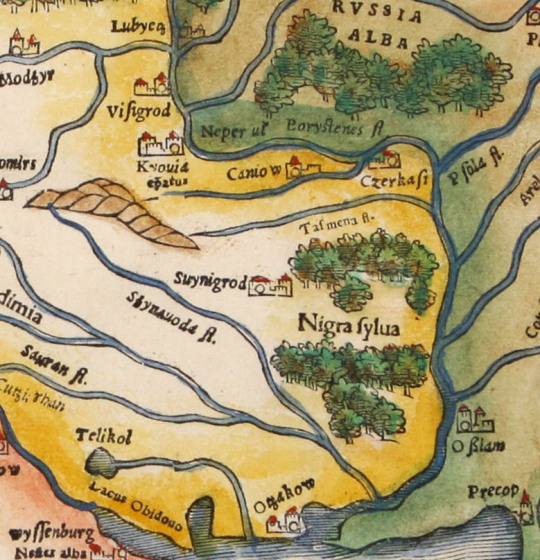
Entertainment
Q: What did Maude have on her most controversial TV episode?
A: An abortion.
True
You better believe we're gonna talk about this.
For those unaware, Maude was a tv sitcom starring a pre-Golden Girls Bea Arthur in the titular role.
Maude Findlay, an outspoken, middle-aged, politically liberal woman living in suburban Tuckahoe, New York with her fourth husband. Maude embraces the tenets of women's liberation, always votes for Democratic Party candidates, and advocates for civil rights and racial and gender equality. However, her overbearing and sometimes domineering personality often gets her into trouble when speaking about these issues.
Maude was technically a spinoff of All in the Family, where Bea Arthur had appeared for a few episodes as Edith Bunker's cousin, once widowed and twice divorced.
In November 1972, two months before Roe v. Wade made abortion legal throughout the US, there was a two-episode arc ("Maude's Dilemma") during the first season of the show in which Maude, at age 47, found herself unexpectedly pregnant. Her daughter brought to her attention that abortion had become legal in the state of New York (in 1970), and eventually Maude decided that this was the best choice.
Interestingly enough, the storyline came about due to a contest being held by "Zero Population Growth" for tv shows addressing the subject of population control. Many suggestions were made about vasectomies.
Producer Norman Lear decided against a false pregnancy due to it being a cop out; he also decided against having Maude suffer a miscarriage, because that situation had already been done on his other show, All in the Family, to character Gloria Bunker. He decided that given her age, Maude would have realistically had an abortion despite her moral turmoil regarding the subject. The network was okay with the subject matter due to the success of the show, though asked her for the show to present an opposing view; the writers obliged by adding a character who had many children and was who content with her choice.
The script, credited to writers Susan Harris, Austin Kalish and Irma Kalish, addressed Maude's birth control choices: Her husband contemplates a vasectomy and a friend asks why she wasn't using the pill (Maude explains it gave her migraines). Maude was a feminist who supported legal abortion, but the show also depicts her ambivalence. While trying to convince her mother, Maude's daughter Carol (played by Adrienne Barbeau) says, "When you were growing up, it was illegal, and it was dangerous and it was sinister. And you've never gotten over that. ...When you were young, abortion was a dirty word. It's not any more." In the end, Maude makes her decision following a conversation with husband Walter (played by Bill Macy), who says, "In the privacy of our own lives, you're doing the right thing."
While this was certainly the most famous and most controversial episode, the show never shied away from hot topics such as prescription drug abuse, alcoholism, domestic violence, marijuana, nervous breakdown, and suicide.
Source: Wikipedia Biography

History
Q: Who was the first U.S. President to speak before the British Parliament?
A: Ronald Reagan
True
On June 8, 1982, in the first speech by an American president to a meeting of both houses of the British Parliament, President Ronald Reagan presents his hope for a future that would "leave Marxism-Leninism on the ash heap of history."
For Reaganites – who describe the 40th president as the “great communicator” – his ideas and delivery were timeless. For his critics, this speech was another example of the reckless and dangerous rhetoric with which he escalated tensions, even risking a “hot war” with the Soviet Union. Less than a year later, he would go on to describe the USSR as an “evil empire”. Forty years on, his words at Westminster drive home a truth about history: plus ça change.
youtube
Source: The Conversation
Arts & Literature
Q: What riddle does Oedipus solve?
A: The Riddle of the Sphinx
True
Continuing his journey to Thebes, Oedipus encountered a Sphinx, who would stop all travelers to Thebes and ask them a riddle. If the travelers were unable to answer her correctly, they would be killed and eaten; if they were successful, they would be free to continue on their journey. The riddle was: "What walks on four feet in the morning, two in the afternoon and three at night?". Oedipus answered: "Man: as an infant, he crawls on all fours; as an adult, he walks on two legs and; in old age, he uses a 'walking' stick". Oedipus was the first to answer the riddle correctly and, having heard Oedipus' answer, the Sphinx allowed him to carry on forward.
I don't know much about Oedipus beyond the obvious, so here's the Tom Lehrer song "Oedopus Rex".
Source: Wikipedia
Science & Nature
Q: Which Cross is the constellation Cygnus - the Northern or Southern?
A: The Northern
True
Cygnus is a northern constellation lying on the plane of the Milky Way, deriving its name from the Latinized Greek word for swan. The swan is one of the most recognizable constellations of the northern summer and autumn, and it features a prominent asterism known as the Northern Cross (in contrast to the Southern Cross). Cygnus was among the 48 constellations listed by the 2nd century astronomer Ptolemy, and it remains one of the 88 modern constellations.
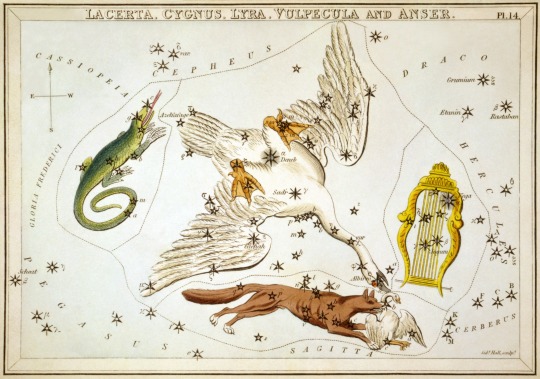
Source: Wikipedia
Sports & Leisure
Q: Which games standard cards are bigger - Bridge's or Poker's?
A: Poker's
True
According to the experts at Playing Cards and More, standard "bridge size" cards are 1/4-inch narrower than normal cards. Why? I don't know.
Bridge fact: Bridge is formally known as contract bridge, and is a derivative of the game whist.
I think that reading a Wikipedia article may be the worst way to try to learn how to play a card game. It is a very long article, and it's very dry. Lots of talk about bidding, duplicate bridge vs. rubber bridge, undertricks/overtricks, and auctions.
Source: Playing Cards and More Wikipedia

If we count the first question, this card was all true! Good job, guys.
See you next time!
#Youtube#true facts#miscellaneous facts#did you know#til#interesting#trivia#today i learned#trivial pursuit#fact check
0 notes
Text
Card #5: Can I Take the Highway to Adano to Meet Fabian?
Geography
Q: What international border does Route 9, better known as the Top of the World Highway, cross?
A: The U.S.-Canada border
True
When I initially read this answer, I assumed it meant the contiguous U.S.-Canada border, but I guess it makes more sense that it's not.
The highway crosses the border between Alaska and Canada, running nearly 80 miles between Jack Wade, Alaska, and West Dawson, Yukon. It is only open during the summer months, because most of the road (as the name implies) takes you high into the mountains, which are covered in snow for much of the year.
Most of the Canadian portion is unpaved, while the US portion has been almost entirely paved as of 2016. A partially-unpaved road through the mountains? I'll pass.
Source: Wikipedia

Entertainment
Q: What singer-actor's last name is Forte?
A: Fabian
True
Fabiano Anthony Forte, in fact. For those of us who aren't aware, Fabian was a teen heartthrob of the American Bandstand era, and is still alive today.
The most interesting fact I found is that Fabian was discovered by a record producer in 1957, while his father was being taken away in an ambulance after having a heart attack at their home.
Fabian later recalled, "He kept staring at me and looking at me. I had a crew cut, but this was the day of Rick Nelson and Elvis. He comes up and says to me, 'So if you're ever interested in the rock and roll business...' and hands me his card. I looked at the guy like he was out of his mind. I told him, 'Leave me alone. I'm worried about my dad.'"
Later on, his family convinced him to respond to the guy, and it turned out well. He ended up with 11 songs in the Billboard Hot 100 between 1958 and 1960.
The music industry was a different thing altogether back then.
Source: Wikipedia

History
Q: What fraternal order is the "K of P"?
A: The Knights of Pythias
True
The Knights of Pythias is a fraternal organization and secret society founded in Washington, D.C., on 19 February 1864. The Knights of Pythias is the first fraternal organization to receive a charter under an act of the United States Congress. It was founded by Justus H. Rathbone, who had been inspired by a play by the Irish poet John Banim about the legend of Damon and Pythias. This legend illustrates the ideals of loyalty, honor, and friendship that are the center of the order. The order has over 2,000 lodges in the United States and around the world, with a total membership of over 50,000 in 2003. The order is headquartered in Stoughton, Massachusetts. Some lodges meet in structures referred to as Pythian Castles.
I was particularly surprised to see that the current application for membership includes the following oath:
I declare upon honor that I believe in a Supreme Being, that I am not a professional gambler, or unlawfully engaged in the wholesale or retail sale of intoxicating liquors or narcotics; and that I believe in the government in which I live. Moreover, I declare upon honor that I am not a Communist or Fascist; that I do not advocate nor am I a member of any organization that advocates the overthrow of the Government of the Country in which this Order has a legal existence, by force or violence or other unlawful means; and that I do not seek by force or violence to deny other persons their rights under the laws of such country.
Their website was pretty explicit about not wanting their logo used for stuff, so here's a different thing I found.
Sources: Wikipedia Indiana Pythias

Arts & Literature
Q: Where's fictional Adano, the setting for John Hersey's Pulitzer-winning A Bell for Adano?
A: Italy
True
Another one I hadn't heard of, which is pretty much par for the course on Arts & Lit questions in this game.
A Bell for Adano is a 1944 novel by John Hershey, the winner of the 1945 Pulitzer Prize for Fiction. It tells the story of an Italian-American officer in Sicily during World War II who wins the respect and admiration of the people of the town of Adano by helping them find a replacement for the town bell that the Fascists had melted down for rifle barrels.
A Time Magazine review of the book in 1944:
The mood of A Bell for Adano is bitter. Its humor is raucous and wild. At its worst, it descends to college humorous magazine slapstick. At its best it is a superb piece of reporting. Read unimaginatively, it is a deadly account of U.S. official incompetence. Stripped of its humor, it is the story of a battle for democracy, no less real for being fought without arms, more important than the military engagement that preceded it.
There was a Broadway play quickly produced, and in 1945, a movie was made based on the book, A Bell for Adano starring John Hodiak and Gene Tierney, and several other adaptations. If that sounds up your alley, maybe check it out.
Sources: Wikipedia Time Magazine

Science & Nature
Q: How many 10ths of a calorie are there in the gum on the back of a typical postage stamp?
A: One
Inconclusive
There are no good sources on this that I can find, period, and I'm not going to link a bunch of non-cited trivia websites and Quora posts.
Some have claimed 1/10th of a calorie, as the answer states. Some say 5.9 calories (for standard-size British stamps). Many figures are not clear on whether they refer to the total caloric content, or what would be gained from typical consumption (a single lick).
Most stamps are self-adhesive in this day and age, in any case.
Bonus fun fact: the study of postage stamps is called philately (fih-LAT-ə-lee), a term coined in 1864 as a replacement for "timbromania" (stamp quest) which was disliked.
Source: Wikipedia

Sports & Leisure
Q: What dandy quarterback is Seth Maxwell based on, in the book North Dallas Forty?
A: Don Meredith
The book focuses on the rowdy sex and drugs culture of fictional North Dallas Bulls football team, and was made into a movie starring Nick Nolte.
Based on the semiautobiographical novel by Peter Gent, a Cowboys wide receiver in the late 1960s, the film's characters closely resemble team members of that era, with Seth Maxwell often compared to quarterback Don Meredith, B.A. Strother to Tom Landry, and Elliott to Gent. Of the story, Meredith said, "If I'd known Gent was as good as he says he was, I would have thrown to him more."
The movie takes somewhat of a lighter tone than the novel, unsurprisingly.
Throughout the novel there is more graphic sex and violence, as well as drug and alcohol abuse without the comic overtones of the film; for instance, the harassment of an unwilling girl at a party that is played for laughs in the movie is a brutal near-rape at an orgy in the novel. At the end of the novel, there is a shocking twist ending in which Phil returns to Charlotte [his girlfriend] to tell her he has left football and to presumably continue his relationship with her on her ranch, but finds that she and a black friend (David Clarke, who is not in the movie) have been regular lovers, unknown to Phil, and that they have been violently murdered. The murderer is Charlotte's ex-boyfriend and football groupie Bob Boudreau (who is also not in the movie); Boudreau has been stalking her throughout the novel.
Yikes. I'm torn about this, because I hate football but I love drama.
Source: Wikipedia

This time we ended up with a couple of movies you can watch if you want, or books you can read if that's more your thing.
Next time we'll carefully address a question about the Soviet Union, the abortion heard 'round the world, everyone's favorite jellybean-eating President, a famous mother-lover, some astronomy words I don't know, and the tricky world of playing cards.
#interesting facts#fact check#fun facts#today i learned#trivia#trivial pursuit#fascinating#random fact#the more you know
0 notes
Text
Card #4: Be Sure to Spit Out Your Gum Before the News Conference Starts
Geography
Q: Which way does a Yield sign point - up or down?
A: Down
True
Okay, but first off - Geography? Really?
Factually, this is another in the category of "just look at one".
Under the Vienna Convention of Road Signs and Signals, the international standard for the modern sign is an inverted equilateral triangle with a red border and either a white or yellow background.
Interestingly, many of the world's countries/territories are split on whether to use the term "give way" or "yield", with most (67/85 listed) preferring "give way". Which makes sense I guess, seeing as road signs need to be pretty universally-understandable, and "yield" isn't a particularly common word in any other contexts. It'd be like if a Stop sign said "Halt". Same meaning, just a more obscure word.
Oklahoma highway patrolman Clinton Riggs was a student at the Northwestern Traffic Institute, now the Center for Public Safety, in 1939 when he created the yield sign as a class assignment. His goal was to improve public safety and determine liability in an accident.
In 1950, as a member of the Tulsa Police Department, Riggs placed the first yield sign at the most dangerous intersection in the city. Within a year, the number of accidents fell to zero, and yield signs soon appeared at intersections across the country.
Source: Wikipedia Northwestern


Entertainment
Q: What comic trio offered the ditty She Was Bred in Old Kentucky, But She's Just a Crumb Up Here?
A: The Three Stooges
True
The original song was written by Harry Braisted and composed by Stanley Carter. The sheet music was published in 1898.
In 1943, in the Three Stooges' 73rd Columbia two-reeler "I Can Hardly Wait," released on August 13, 1943, which featured Curly singing a parody of the song, while slicing a loaf of bread.
Source: New York Public Library Collection YouTube
youtube
History
Q: Who was the first President to appear at a live televised news conference?
A: John F. Kennedy
True
January 25, 1961 was the first live televised news conference.
The first non-live televised press conference was held on January 19, 1955, with Dwight D. Eisenhower. He opened by saying "Well, I see we're trying a new experiment this morning. I hope that doesn't prove to be a disturbing influence."
Sorry, Mr. President.
After January 19, 1955, President Dwight D. Eisenhower’s Press Secretary James C. Hagerty permitted radio, television, and newspaper equipment to record coverage of news conferences. The conferences were held about every two weeks and before the film was released to the public Hagerty edited what were considered the most newsworthy portions.
So at that time, they were just lifting out a few good parts. It took another 6 years to get it live.
On January 25, 1961, John F. Kennedy became the first president to hold a live televised news conference, showing his comfort with members of the media. Briefing books, practice sessions, and increasing amounts of staff time were needed to prepare for conferences that were now major news events as more than half the nation’s households had television sets.
And now, *gestures vaguely at everything*.
Source: History Channel White House History YouTube
youtube
Arts & Literature
Q: What's Bottom's first name in Shakespeare's A Midsummer Night's Dream?
A: Nick
True
Not being terribly familiar with Shakespeare myself, we'll take the Wikipedia summary's word for it.
Nick Bottom is a character in Shakespeare's A Midsummer Night's Dream who provides comic relief throughout the play. A weaver by trade, he is famously known for getting his head transformed into that of a donkey by the elusive Puck. Bottom and Puck are the only two characters who converse with and progress the three central stories in the whole play. Puck is first introduced in the fairies' story and creates the drama of the lovers' story by messing up who loves whom, and places the donkey head on Bottom's in his story. Similarly, Bottom is performing in a play in his story intending it to be presented in the lovers' story, as well as interacting with Titania in the fairies' story.
Nick Bottom does seem like a joke name, but Shakespeare was a silly dude.
Source: Wikipedia

Science & Nature
Q: What did delinquent dentist William Semple first add to chewing gum, in 1869?
A: Sugar
Inconclusive
Buckle up, because the history of chewing gum is more complicated than you might think - it has existed in many forms since the Neolithic period. We'll be talking about what sources call modern chewing gum, as almost every society can claim some sort of precursor, ranging from tree bark to coca leaves to blubber. People have an innate need to idly chew on stuff, I guess.
The rest we're going to have to break down bit by bit.
William Semple was in fact a dentist. We've got that much, at least. And in 1869 he did file a patent for "improved" chewing gum.
Calling him a "delinquent" I assume is a dig about chewing gum being bad for your teeth, but importantly
Semple's gum was intended to clean the teeth and strengthen the chewer's jaw. It was not a sweet treat; ingredients included chalk and powdered licorice root. Charcoal was also suggested as a "suitable" ingredient in the patent.
so the "delinquent" label seems a bit unfair to me. This time in chewing gum history was pretty active, oddly.
On December 28, 1869, Semple filed Patent No. 98,304 with the U.S. Commissioner of Patents. However, Amos Tyler of Toledo, Ohio, patented his chewing gum on July 27 of the same year.
Amos Tyler's chewing gum was made of white tree rosin mixed with olive oil - yum.
Previously, John B. Curtis successfully sold his "State of Maine Pure Spruce Gum" in 1848, though he did not patent it.
Credit is given to John Colgan for the first flavored chewing gum, who mixed powdered sugar with tolu, a powder originating from the balsam tree.
I will admit the wording on this question is a bit ambiguous, as is often the case with Trivial Pursuit questions because they have to fit in two lines. William Semple was almost certainly not the first person to add sugar to chewing gum. And I don't see anything conclusively indicating that he first did so in 1869; that's simply the year that his patent was filed.
This question is flawed, and probably incorrect no matter how you frame it.
Sources: Wikipedia Also Wikipedia Patently Interesting Chewing Gum Facts
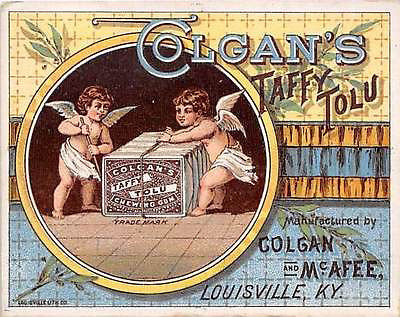
Sports & Leisure
Q: Which of baseball's major leagues evolved from the Western Association?
A: The American League
False
I had originally marked this one down as true at first glance - I am the opposite of a sports expert - but it turns out it's a little more nuanced.
From what I can tell, there have been several separate leagues called "Western Association" at different (though sometimes overlapping) time periods in the late 1800s - early 1900s. The longest running Western Association played between 1905 and 1954.
However, the predecessor to The American League is actually the Western League, which even Wikipedia notes "Not to be confused with Western Association".
It seems to be an error based on things having very generic and similar names.
Source: Wikipedia
A little of this, a little of that. I'm sure the future will hold many more opportunities for me to get bogged down in the surprisingly complex history of common items.
Next time we'll talk about a dangerous highway, a famous singer I doubt any of us are familiar with, an explicitly non-Facist organization, a wartime novel about an explicitly non-Facist town, the possibility of a postage-stamp diet, and a book that had a way darker ending than the movie based on it.
#Youtube#random fact#interesting facts#true facts#fact check#trivial pursuit#trivia#the more you know
0 notes
Text
Card #3: Bury Me at the Palace with my Teardrop Bottle
Geography
Q: What Asian country is home to the Palace of the Moguls?
A: India
True
I'm almost completely convinced that this question is referring to the Red Fort in Dehli, which was the main residence of the emperors of the Mughal Dynasty. A Google search for "Palace of the Moguls" mostly leads to Indian restaurants in the UK, as well as a hotel, but also a few very old pictures from around 1895 which mention The Peacock Throne, which Wikipedia says was a famous jeweled throne that was the seat of the Mughal emperors of India, and has a fascinating history of its own that I won't get into here.
Source: Wikipedia

Entertainment
Q: What circus performer noted: "Look, remember, on that wire is your life, below is your death"?
A: Karl Wallenda
Reasonably True
Or at least: True, according to what may be a chapter from a book that I can't find the source of. The cited source in the transcription is a dead end, but I'll link it in case you're curious.
What did I say about last week's Sophia Loren question?
So, while I can’t back this up with any other sources as a thing she definitely said, I also don’t see any suggestion of this quote as being attributed to anyone else, so…we’ll go with Reasonably True.
For what it's worth, the currently-regarded famous quote from Karl Wallenda is "Being on the tightrope is living; everything else is waiting."
Karl Wallenda, for the uninitiated, was a German-born circus performer from the early to mid-1900s. He was a high-wire artist, the founder of The Flying Wallendas, a daredevil circus act which performed dangerous stunts, often without a safety net.
Perhaps unsurprisingly, he died during a stunt. Surprisingly, he was 73 at the time.
Source: A Book? Wikipedia

History
Q: How many times has the body of Eva Peron lain in state and been buried?
A: Four
True
This one was fascinating, as I knew almost literally none of this. I knew she existed; that was about it.
Former first lady of Argentina, lovingly known as "Evita".
She died in 1952 from cervical cancer a the age of 33. Her body was embalmed and held at the Buenos Aires headquarters of the CGT - the largest Peronist trade union in Argentina.
In 1955 her body was removed by military officers who took part in the coup that forced Juan Peron into exile.
Once the corpse was taken, its improbable odyssey began.
It probably spent time in a van parked on the streets of the capital, behind a cinema screen in Buenos Aires and inside the city's waterworks.
Almost certainly, it was stored in the offices of Military Intelligence. But wherever it went, it is said that flowers and lighted candles appeared. Clearly a secure, long-term solution was needed.
In 1957, with the covert assistance of the Vatican, the remains of Eva Peron were taken to Italy and buried in a Milan cemetery under a false name.
Evita was far from Argentina, but she was not forgotten.
"Where is the body of Eva Peron?" asked graffiti that appeared in Buenos Aires. Her power as a symbol of resistance grew.
In 1971 the body was exhumed and flown to Spain, where it was restored and put on display in her husband's home until he died in 1974.
At that time it was returned to Buenos Aires and put on display.
In 1976 it was placed in her family's mausoleum in Recoleta Cemetery and has been undisturbed ever since.
Source: BBC

Arts & Literature
Q: Did Mona Lisa wear a necklace?
A: No
True
This one is pretty straightforward, so what else can we learn about it?
Painted likely sometime between 1503 and 1517, it was moved to the Louvre after the French Revolution, but was not well-known to the public until it was stolen from the museum in 1911. The thief was an employee of the museum, Vincenzo Peruggia, who believed that the painting belonged in Italy. He kept it in his apartment for 2 years and was caught when he tried to sell it. He served six months in prison and was hailed for his patriotism in Italy.
Source: Wikipedia

Science & Nature
Q: What was hygiene-conscious Silar Noble the first to make, when he cut a block of wood into small pieces in 1872?
A: Toothpicks
Inaccurate in a number of ways
For one, the guy's name was Silas. We'll chalk that up to a typo, and another chance to use this gif.

But also
Anthropologists have found evidence of grooves on fossilized teeth that resulted from rough-hewn toothpicks. Later, in ancient Rome, the emperor Nero entered a banquet hall with a silver toothpick lodged in his mouth.
Even the earliest age of bronze metalwork in Northern Italy and East Alps produced small and slim bronze toothpicks.
So no guy in the 1800s "invented" the idea of toothpicks. It's kind of like saying someone "invented" toilet paper. It's a simple idea to solve a universal problem, and a lot of people had similar concepts at different times.
Anyway.
The American toothpick industry owes its success to Charles Forster, a 19th-century Bostonian who hired Harvard students to demand toothpicks in restaurants. He'd return to the restaurant the next day to sell his wares. He used the same tactic at retail stores, gradually making the toothpick a ubiquitous part of the culinary experience.
Then Charles Forster is believed to be the first to manufacture disposable wooden toothpicks and was machine-making them by 1860.
Though somehow we're also told that the first toothpick-manufacturing machine was developed in 1869, by Marc Signorello.
So what is it that Silas Noble did in 1872? He (and J.P. Cooley) filed US Patent 127,360 "Improvement in machines for making toothpicks" (implying, even by its very name, that there were already machines made for doing this).
It's just not true, okay? No part of it is true, and I'm really frustrated at the amount of research and conflicting information there is about something as simple as toothpicks.
Just wait until I get into chewing gum...
Sources: NPR Eating Utensils Wikipedia DATAMP

Sports & Leisure
Q: What company brews Michelob beer?
A: Anheuser-Busch
True
Whew. Something simple.
Michelob is a 4.7% ABV pale lager developed by Adolphus Busch in 1896 as a "draught beer for connoisseurs".
Bottled Michelob was originally sold in a uniquely shaped bottle named the teardrop bottle because it resembled a water droplet. The teardrop bottle was awarded a medal from the Institute of Design in 1962. Five years later the bottle was redesigned for efficiency in the production line. This bottle was used until 2002 when it was dropped in favor of a traditional bottle. The teardrop bottle was used again from January 2007 to October 2008.
In my research on this topic I did discover a guy on Twitter, @TeardropBottles (please give him a follow). Since 2019 this account has been making posts, often consisting of vintage advertisements and merchandise, pleading Michelob to bring back the teardrop bottle. Stay strong, friend.
Source: Anheuser-Busch Wikipedia Twitter
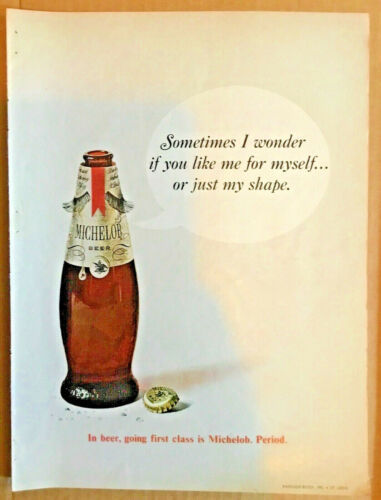
A good selection today.
Friday: the history of a road sign, a Three Stooges parody song, Dwight Eisenhower portends the future of Fox News, an ass named Bottom, the annoyingly complicated history of chewing gum, and I call out an inaccuracy in a sports question.
#trivia#trivial pursuit#fact check#fun facts#today i learned#fascinating#random fact#the more you know
0 notes
Text
Card #2: Let's Go Get a Reuben at the Canal
Geography
Q: What Asian country boasts the world's longest canal, at 2,500 miles?
A: China
True, but inaccurate
I say true because China does boast the world's longest canal, but the measurement provided here is absurdly wrong.
The Beijing-Hanzhou Grand Canal is the world's longest artificial river or canal. The oldest sections trace their history back to the 5th century BCE. The total length is approximately 1,776 km (1,104 miles).
Where did they get 2500 miles? I don't really know. At first I thought maybe they fumbled a conversion somewhere. But if they had meant 2500 km, that still would have been wrong at ~1550 miles. 2500 miles would put it at over 4000 km.
So the answer is correct, but the question is not.
Source: World Atlas

Entertainment
Q: What actress aired her staunch beliefs against adultery, then noted: "This does not mean I did not pet with Carlo"?
A: Sophia Loren
Reasonably True?
This one was difficult. The only source I could find for this particular quote was a 1978 review of her biography "Sophia, Living and Loving: Her Own Story" by A. E. Hotchner - which at the time this game came out, was already 6 years old. I do not have a copy of this book and could not come up with a convenient way to access one, and don't know that the quote is alleged to have appeared in the book itself, anyway.
So, while I can't back this up with any other sources as a thing she definitely said, I also don't see any suggestion of this quote as being attributed to anyone else, so...we'll go with Reasonably True.
Source: Kirkus Reviews

History
Q: What was Zechariah Brigden the first to do through college, in 1657?
A: Work his way
True
I really had to work for this one (haha). I found an article in the 1933 edition of The Harvard Crimson (their school newspaper) titled "First Man To Work Way Through College Tolled Bell and Waited an Tables in 1657".
For ringing the college bell and waiting on table in the commons, Zachariah Bridgen, who entered Harvard College in 1657 at the age of 14, was given the sum of about $4 by the steward's office, on December 31, 1654, prior to his entrance as a student. This is the first record of an American student who earned part of his college expenses.
The steward's books further reveal that Bridgen had charges against him for: "commones and sizinges," which was board together with food and drink ordered from the buttery: "tuition"; 'study-rente and beed," or room and bed "for and candell"; wood; and for bringing corn from Charlestown." On he other side of the ledgers, Bridgen vas credited with such things as "sillier," "wheatt," "malte," "Indian" or born and "a bush of parsnips."
As a waiter, Bridgen received between 2 and $2.25 per quarter for three successive quarters, after which he was revarded approximately $12.25 for a scholarship, and $7.50 for wages. The total cost of an education in the 1650's ranged from $100 to $200, and was payable in silver and groceries.
Source: The Harvard Crimson
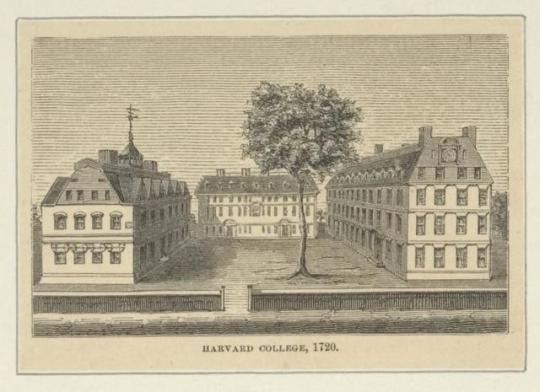
Arts & Literature
Q: What Biblical patriarch fathered Levi, Gad, Reuben and Joseph?
A: Jacob
True
Few things are easier to find information on than the Bible.
Jacob - the guy with the ladder - later given the name 'Israel' (regarded as a patriarch of the Israelites) had 12 sons in total: Reuben, Simeon, Levi, Judah, Dan, Naphtali, Gad, Asher, Issachar, Zebelun, Joseph, and Benjamin - who are regarded as the founders of the Twelve Tribes of Israel.
Also a daughter, Dinah. Yay, sexism.
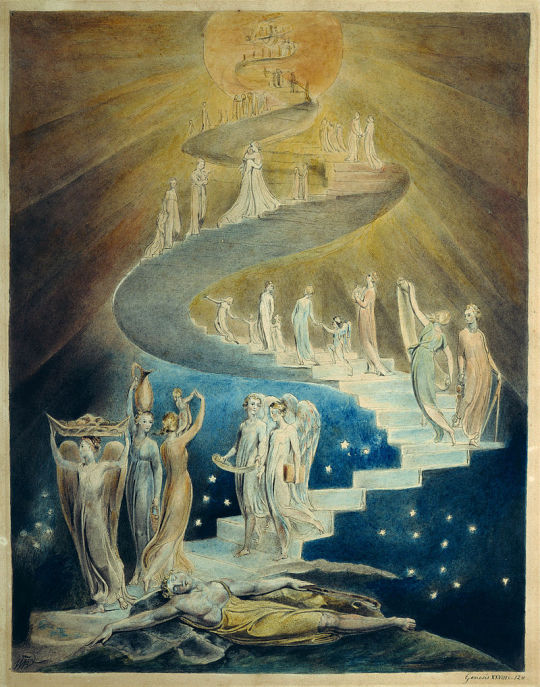
Source: Wikipedia
Science & Nature
Q: What's D divided by X in Roman numerals?
A: L
True
D = 500, X = 10, L = 50.
So, 500 / 10 = 50.
Source: Roman Numeral Calculator

Sports & Leisure
Q: What vegetable dish combines with corned beef and cheese in a Reuben sandwich?
A: Sauerkraut
True
According to Omaha lore, the Reuben Sandwich was dreamed up at Omaha's Blackstone Hotel in 1925 by Reuben Kulakofsky, a local grocer, to feed a group of late-night poker players. Charles Schimmel, one of the players and the hotel's owner, liked it so much he put it on the menu of The Plush Horse, the hotel restaurant. A competing claim comes from the family of Arnold Reuben, who owned a series of New York City restaurants. Although there is evidence that a sandwich similar to the classic Reuben was served at Arnold Reuben's restaurants, only family stories substantiate his claim to THE Reuben Sandwich.
In the city of Omaha, March 14 is designated Reuben Sandwich Day.
Source: Wikipedia History Nebraska My Jewish Learning
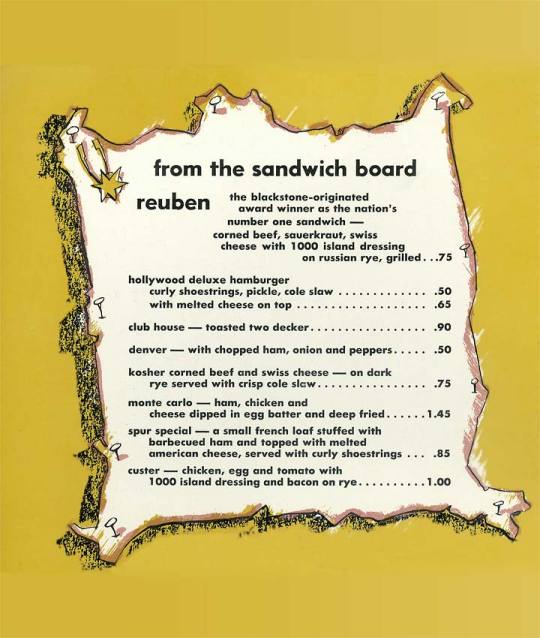
Not too bad.
Next time we'll look at a possibly mis-named palace, a quote that a famed acrobat may or may not have said, the complicated burial history of a beloved first lady, who stole the Mona Lisa's necklace, the disputed history of the toothpick, and the draft beer for connoisseurs.
#trivia#today i learned#trivial pursuit#fact check#fun facts#fascinating#the more you know#random fact
0 notes
Text
Card #1: Henry Ford and the Telephone Gardener
Welcome, all, to our first foray into knowledge.
Geography
Q: What African country's name means "lion mountain" in Portuguese?
A: Sierra Leone's
True (though sexist?)
We start our journey with an easy question.
The country takes its name from the Lion Mountains near Freetown. Originally named Serra Leoa (Portuguese for 'lioness mountains' [which is why the question is sexist]) by Portuguese explorer Pedro de Sintra in 1462, the modern name is derived from the Italian spelling, which was introduced by Venetian explorer Alvise Cadamosto and subsequently copied by other European mapmakers.
These days, Sierra Leone is a predominantly Islamic country, a former British Colony which gained independence in 1961, and went through a civil war in 1996.
Source: Wikipedia
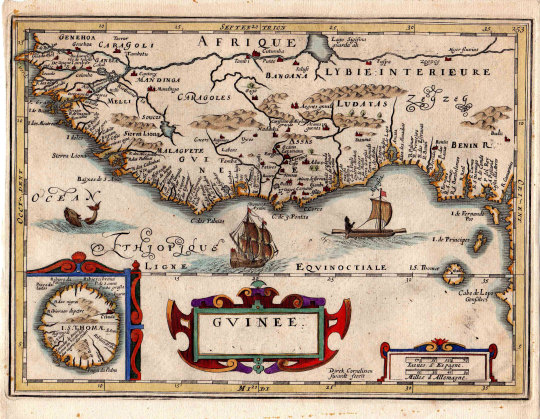
Entertainment
Q: What size shoes does Trapper John wear on TV's M*A*S*H?
A: Twelve
True
This question nearly broke me.
I'm a big M*A*S*H fan, I've seen the show dozens of times. It was my dad's favorite show, we had it on DVD, I've watched through the entire series several times. And yet I had no idea what the answer to this question was.
I couldn't find any information online, so I proceeded to do the only rational thing: watch the first three seasons of M*A*S*H (the seasons that Trapper John is in) to figure out when they would have possibly mentioned this particular factoid.
Already on question two, I'm having to do hours of (enjoyable) research.
As it turns out, the answer is found in Season 3, Episode 12 "A Full Rich Day". It's a throwaway comment made by Hawkeye after a man collapses in front of him and Trapper.
Hawkeye: "It's his chest and shoulder. Recruiting office got their money's worth out of this guy. Let's prep him.
Trapper: "And you can remove my foot from my mouth."
Hawkeye: "It's about a size 12-ectomy."
Someone on the Trivial Pursuit team is a bigger M*A*S*H fan than I am, for sure.
Source: M*A*SH Season 3, episode 12 "A Full Rich Day". (currently on Hulu)
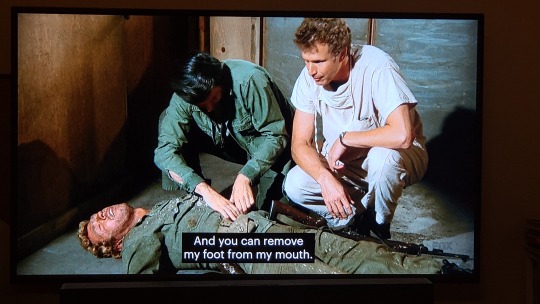
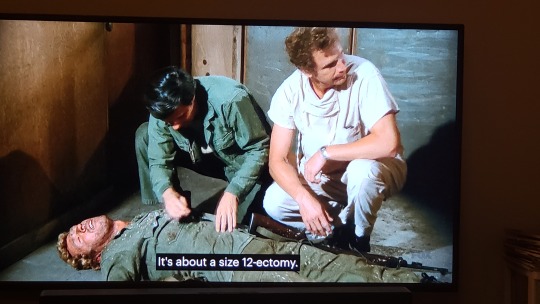
History
Q: Who mass-produced the T, A, B, C, F, R, K, N, R and S?
A: Henry Ford
True
(Though I don't know why it lists "R" twice)
Between 1903 and 1908, Ford produced the Models A, B, C, F, K, N, R, and S, selling hundreds or a few thousands of most of these per year. The Model T was the first mass-produced model in 1908, which totaled millions sold over 20 years. In 1927 it was replaced with the Model A, the first car with safety glass in the windshield.
Source: Wikipedia
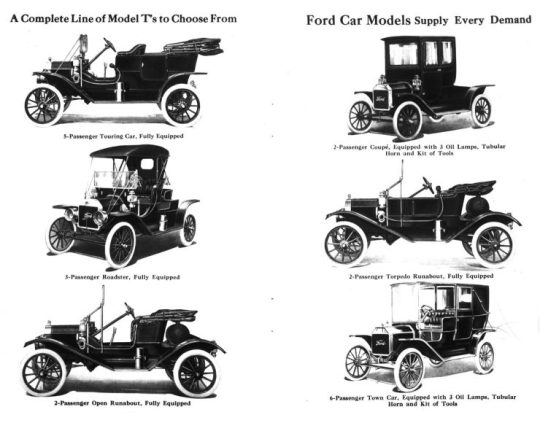
Arts & Literature
Q: What's "genuine imitation leather," according to the Quarterly Review of Doublespeak?
A: Fake leather
True
More interesting than the answer is the fact that this magazine existed. Unsurprisingly, the publication was headed by the National Council of Teachers of English.
It began as the Public Doublespeak Newsletter in 1974, and was renamed The Quarterly Review of Doublespeak when American linguist William D. Lutz took over as editor (1980 to 1994; the publication continued until 2000).
Lutz wrote a famous essay The World of Doublespeak and the book Doublespeak: From "Revenue Enhancement" to "Terminal Living" in 1989. They describe the four different types of doublespeak, which he explains as Euphemism, Jargon, Gobbledygook, and Inflated Language.
He also wrote the books The New Doublespeak: Why No One Knows What Anyone's Saying Anymore in 1996, and Doublespeak Defined: Cut Through the Bull**** and Get the Point in 1999.
Source: Wikipedia and NCTE Archives

Science & Nature
Q: What can you ask a New York City telephone gardener to do for your plants?
A: Talk to them by phone
Unknown
I cannot find any information on this, to the extent that one of the search results is this very Trivial Pursuit card.
If you have any information, please let me know.

Sports & Leisure
Q: How many fouls is a National Basketball Association team allowed in each quarter before bonus free throws are allowed?
A: Five
True
I know zero things about basketball, so I'll just drop this in.
The NBA Bonus rule is found under Rule 12 Part B Section 5 in the official NBA rule book (click here to view it). It states that:
“The first four common fouls committed by a team in any regulation period (quarter) shall result in the ball being awarded to the opposing team on the sideline nearest where play was interrupted. The ball shall be awarded no nearer to the baseline than the free throw line extended.”
When an NBA team draws the fifth common foul of a quarter, they are awarded with penalty free throws. The player who was fouled will get to shoot two free throws.
I had this one flagged as being possibly outdated simply because I don't know how often these kinds of rules change, but it seems to still be the case.
Source: Sports Fan Focus

Altogether, not a bad spread.
Come back Friday and we'll try to figure out where 1400 extra feet came from, and discuss who begat two different Reubens.
#trivia#today i learned#trivial pursuit#fun facts#fascinating#the more you know#fact check#random fact
0 notes
Text
What's all this, then?
I grew up playing the original 1981 edition of Trivial Pursuit at my grandparents' house in the 90's, and it was always impossible. I imagine even for a kid in 1981 it would have been difficult, but 15+ years removed, so many of the references and cultural touchstones had changed or faded into obscurity that I'm sure if any of us kids ever got the questions right it was a coincidence.
As an adult, when I got a copy of the game for myself, it hadn't gotten much easier. Through many play-throughs, some questions stuck out to me because it seemed like they couldn't possibly be correct. Or they were pretty clearly outdated (East/West Germany, anyone?).

As with most things in my life, I was compelled to do a deep-dive and do the fact-checking for myself, just for fun. But I thought maybe other people would be interested in some of these things, too.
Even when the provided answers are correct, often they can spark curiosity about the subject, and can be a good jumping-off point to learn something new.
I'm a curious person by nature, and something that's always struck me with this game is that often a provided answer will leave me with even more questions. A question on Card #1 asks: "What is 'genuine imitation leather', according to the Quarterly Review of Doublespeak?" Now hold on, because you've definitely buried the lede on that one. Even if I didn't know, I could give a guess that genuine imitation leather is fake leather, but I'm way more interested in knowing what the hell the Quarterly Review of Doublespeak is.
Method
My approach is that I go through and transcribe the cards into a spreadsheet. As I'm doing so, I flag any that I suspect might be incorrect and/or outdated. Then I go through individually and try to find information on the subject to either back up or disprove the provided answer.
Some are very simple to confirm or deny, while others require some digging. I use a lot of Wikipedia, not just because it's convenient and easy, but because they cite their sources. One of the trickiest things about trivia is how persistent a lot of "facts" can be, popping up on "useless information" pages and the like, with no further details given. Really, it's an excuse to learn some new and interesting things that I may not have come across otherwise.
It's about the journey of learning more. The pursuit, you might say, of trivialities.
Genus II
I'm starting with the second game, because why not.
Genus II Edition is the 1984 release of Trivial Pursuit.
The categories for this game are
Geography
Entertainment
History
Art & Literature
Science & Nature
Sports & Leisure
which are the same as the original 1981 Genus Edition. If we get into some of the other editions eventually, they switch it up.
Anyway, watch this space.
0 notes